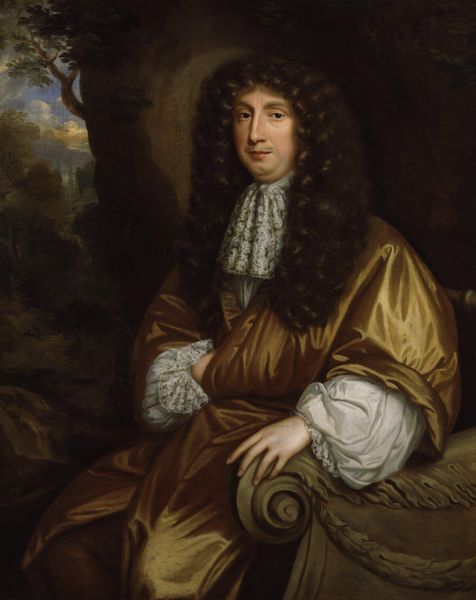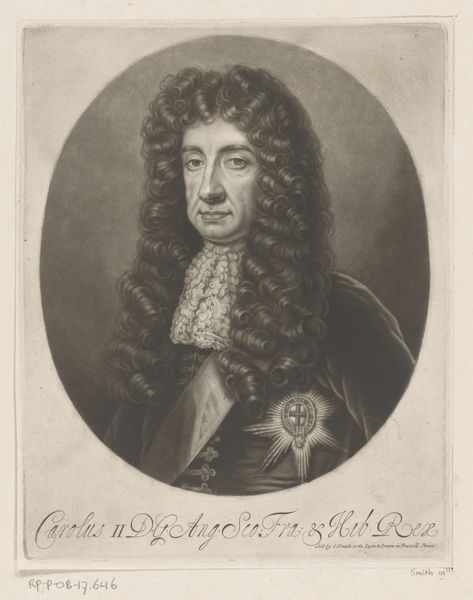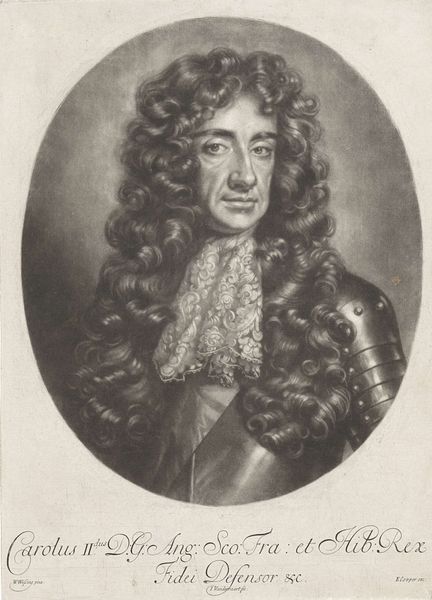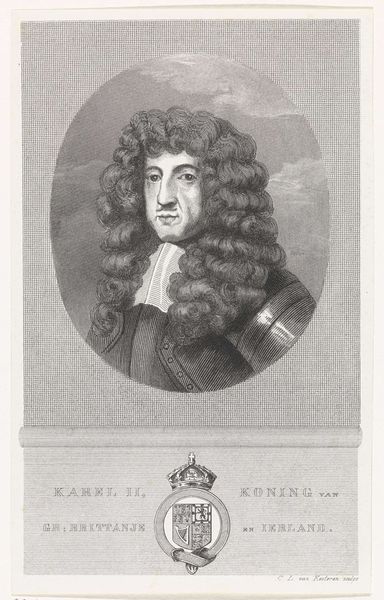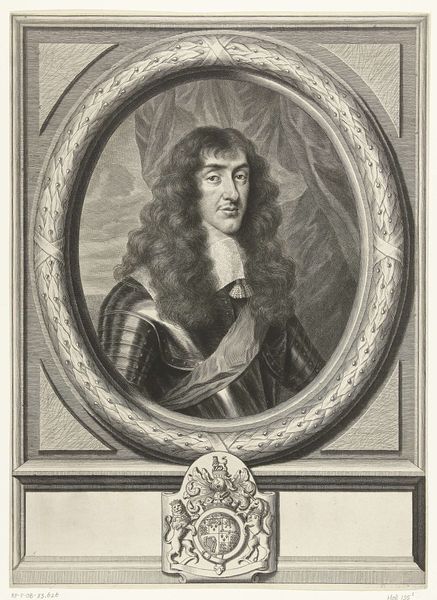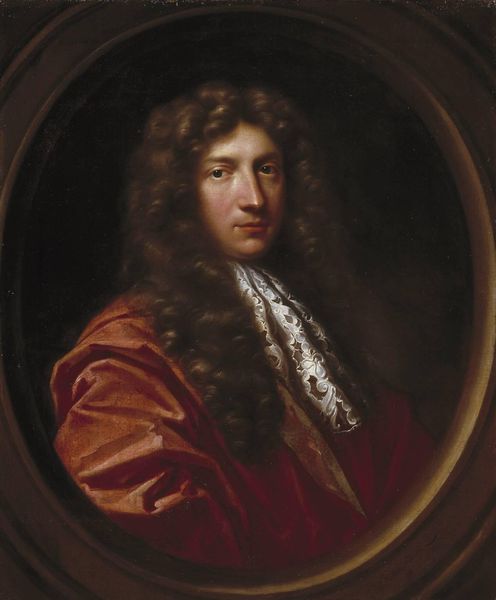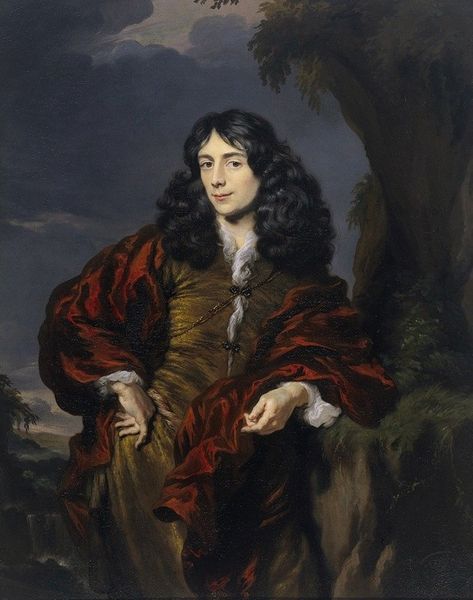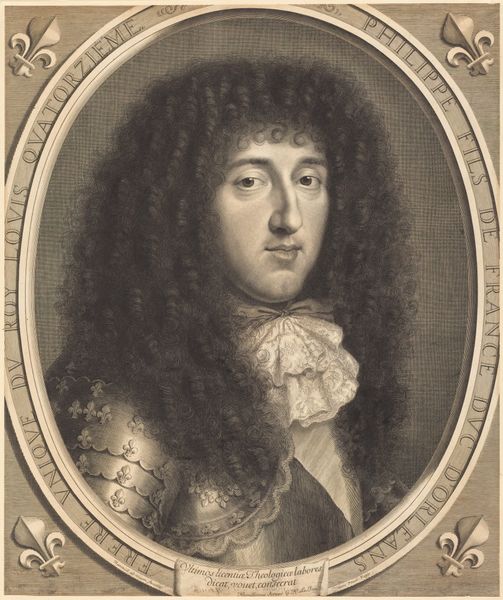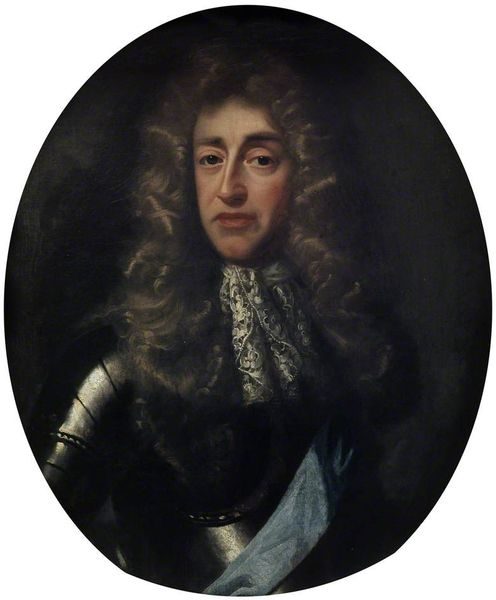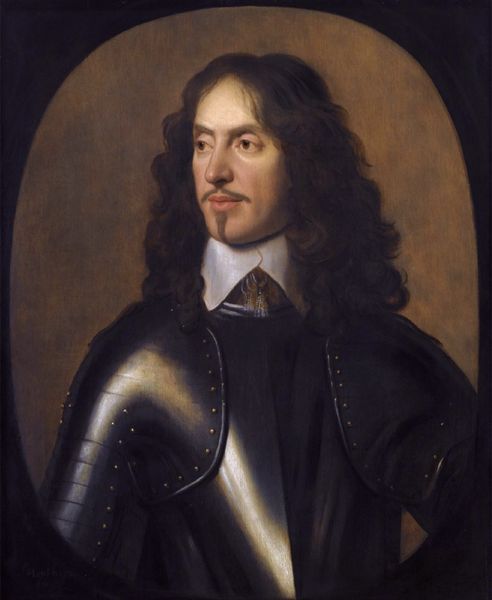
#
portrait
#
character portrait
#
face
#
portrait image
#
portrait
#
portrait reference
#
male-portraits
#
portrait head and shoulder
#
animal portrait
#
animal drawing portrait
#
portrait drawing
#
facial portrait
#
digital portrait
Dimensions: 62.9 x 74.9 cm
Copyright: Public domain
Curator: Welcome to the National Portrait Gallery. Today, we’ll be discussing Mary Beale’s depiction of "King Charles II," painted around 1675. Editor: My immediate reaction is one of subdued opulence. The oval composition and the framing draw my eye directly to his face, while the browns and blacks evoke a rather serious tone, despite the undeniable richness of his garments. Curator: Indeed. This portrait captures Charles II during a complex period of English history. Beale, as one of the first professional female painters in England, navigated a male-dominated art world, securing commissions like this through skill, but also, astute social maneuvering. She was capturing more than just a likeness. She captured the monarchy's restored authority. Editor: The rendering of light here, specifically, is masterly. See how it catches the edges of his lace cravat and illuminates his face, creating depth and guiding our attention. There is a clear Baroque influence in the dynamism, wouldn't you agree? Curator: Absolutely. But consider what it meant for Beale, as a woman, to paint a King in this era. Portraiture served not just aesthetic but also political functions. Beale’s image of Charles reinforces his position after the turbulent Cromwellian period. These commissions cemented not only the monarchy’s standing, but her own. Editor: I do think his eyes are interesting - conveying a weary intelligence. This, set against the texture and luxuriousness of his wig and clothing creates such a beautiful play of contrasts, almost as though trying to depict the complexity of the sitter through pure composition alone. Curator: A complexity deliberately constructed, I'd argue, keeping in mind the visual politics of the period. A painter of the Royal court did not necessarily have free rein to create, interpret, and define their subject's persona freely. The painting served the man, and by extension, his social and political agenda. Editor: It certainly brings up some points to think about. A lot is expressed in his presentation. Curator: Indeed. The painting is much more than it appears. It speaks volumes about social positioning, gender roles, artistic license, and Britain in the late 17th Century.
Comments
No comments
Be the first to comment and join the conversation on the ultimate creative platform.


